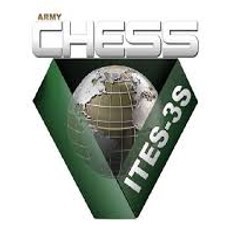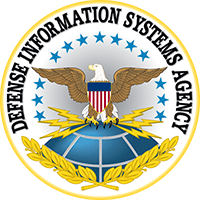Last year, I published 10 Perilous Misconceptions of Censuring Current State Mapping & Analysis. The whitepaper debunks various myths that current state mapping and analysis is not an essential component of business transformation, business process reengineering (BPR) and business analysis initiatives.
The whitepaper addresses comments such as:
“We already know what we do, let’s just skip to what we need to be doing going forward – so no need to map and analyze existing processes.”
“Our current processes are dysfunctional – we are going to radically transform to new lean agile processes – so no need to map and analyze existing processes.”
“We are implementing new enterprise systems and we are adopting best practices provided by the solutions vendor – so no need to map and analyze existing processes.”
– and on and on it goes!
I encourage you to download and read this in-depth 18-page whitepaper to glean additional insight into the risks of circumventing current state mapping and analysis.
The focus of this post, however, is on the positive - the key advantages of business process modeling. For the purpose of this post I use the term “modeling” and “mapping” interchangeably. The advantages of business process modeling presented below apply to both current state and future state business processes.
A process model is a visual/graphical representation of the complex moving parts of a business process. Standard symbols represent the work activities, conditions, relationships, and events that comprise the workflows of the business process.
Because of the visual/graphical nature of a process model, it’s a powerful tool that enables business Subject Matter Experts (SMEs) and Business Analysts to discuss and communicate business rules and requirements in a clear, concise and common manner – in a way that text only descriptions cannot achieve.
The key advantages of business process modeling include:
Quality of the Conversation
In any business analysis interaction among analysis and subject matter experts, the quality of the conversation (level of engagement, depth of discussion, clear and accurate communication, etc.) is essential to getting the business rules and requirements (current and/or future state) “right.” Business process models provide the focal point of the conversation among the participants. There is no ambiguity regarding the where (in the process) and what of the processes that is being discussed.
Mutual Understanding
It’s essential that participants have a common mutual understanding of a business analysis discussion. Common mutual understanding is difficult to achieve with text only. If you ask five people to read the same paragraph describing a section of a business processes, how many interpretations will result? At least five!
Business analysis is not about arguing about what a text description means, business analysis starts once participants have a common mutual understanding of the discussion. The visual/graphical nature of business process models result in an intuitive unambiguous understanding of the process among the participants.
Documentation
A process map is an important store of knowledge. Business processes are complex and have many moving parts. The process of discussing and mapping a business process converts tacit tribal knowledge (knowledge the lives in the minds of SMEs) into transcribed documented knowledge. Transcribed documented knowledge, via a business process model, is essential to analyzing and improving business processes. See my whitepaper: Crossing the Chasm from Business Chaos to Business Agility.
Transparency
A business process model is an organizational reference document. One of the key issues in organizations today is lack of trust – vertically, horizontally, among management, staff, customers, vendors, and other stakeholders. A business process model provides a bright light regarding how work activities are (or expected to be) performed, who is expected to perform the work activities, at what level of quality, upstream and downstream dependencies and impact, the systems supporting the work activities, etc. The transparency provided by a business process model provides an objective foundation that significantly improves trust among stakeholders.
Alignment of Business Processes with Business and I.T. Strategy
Business processes enable the execution of business strategy. In other words, if business processes are not alighted with business strategy, execution of business strategy languishes. Similarly, in order for business processes to support business strategy, the business processes must be supported by the requisite technology and business systems. A business process model is essential in identifying gaps between business processes and business strategy and between business processes and supporting technology and systems.
Business Process Improvement and Agility
The key dimensions of business process improvement are organizational effectiveness, operational efficiency and process agility. Organizational effectiveness is about creating customer value – product “fit” for purpose/use, quality, customer service, etc. Operational efficiency is about providing effectiveness in the most economical manner. In other words, maintaining the defined levels of effectiveness at the lowest cost. Business process agility is about rapidly morphing business processes based on changes in business strategy. Business process models enable rapid identification, analysis and the modeling of scenarios regarding improvements in effectiveness, efficiency and agility.
Standardization of Best Practices
Similar business processes are often performed in multiple business units of an organization, particularly organizations that have grown in part through acquisitions. For example, procurement, human relations, customer billing, etc. related business processes are often performed at the business unit level rather than at the enterprise shared services level. There are excellent objective pro/con arguments both ways for business unit level business processes vs. enterprise shared services. The pros/cons are not the subject of this post.
My point here in this post is that a business process model enables identification and analysis of best practices across business units. In other words, the identification of the best practice among multiple versions of business practices across the business units enables the organization to identify, adopt and apply the best practices across the business units, regardless of business or enterprise level implementation of the business processes.
Business System Requirements
Business processes and supporting business systems need to continually change and adapt to keep pace with changing business requirements. However, business processes and supporting systems often evolve informally, ad-hoc and slowly.
The result is that many business processes are a tangled web of inefficient work activities, ambiguous policies and legacy procedures that consume resources and impede performance. These same processes, unfortunately, often provide the source for business systems requirements - requirements that reflect legacy business rules that constrain, rather than improve, business processes.
Business process modeling enables business analysts and business systems analysts to coherently map and thoroughly analyze business requirements and identify and specify the business systems requirements to support the business requirements.
Today’s rapidly changing business environment favors high-performing, agile organizations capable of delivering extraordinary customer and business value.
Meeting this challenge often requires transformative change - and sustainable on-going improvement in business processes, organizational culture and supporting technologies.
Subscribe to my blog | Visit our Knowledge Hub
Visit my YouTube channel | Connect with me on LinkedIn
Check out our Business Analysis Training Courses and Consulting Services




















